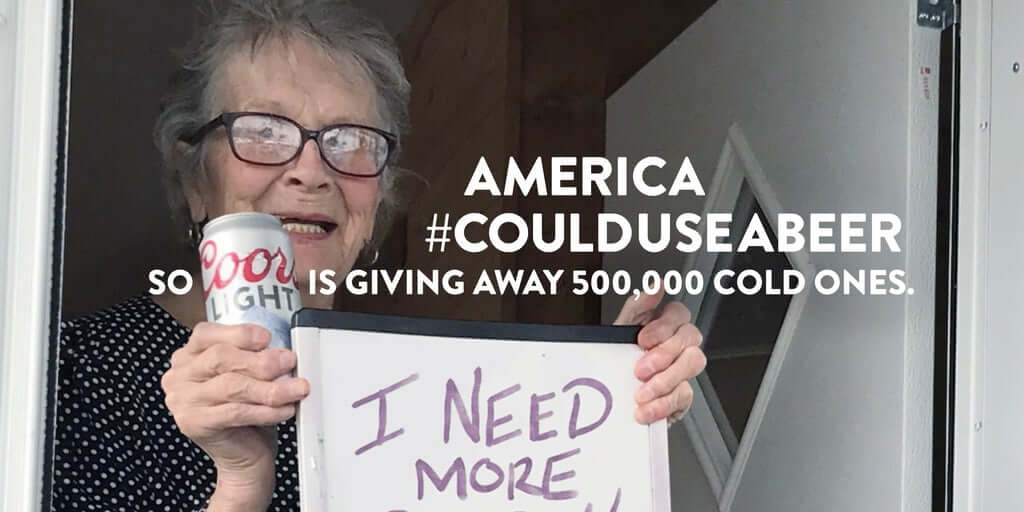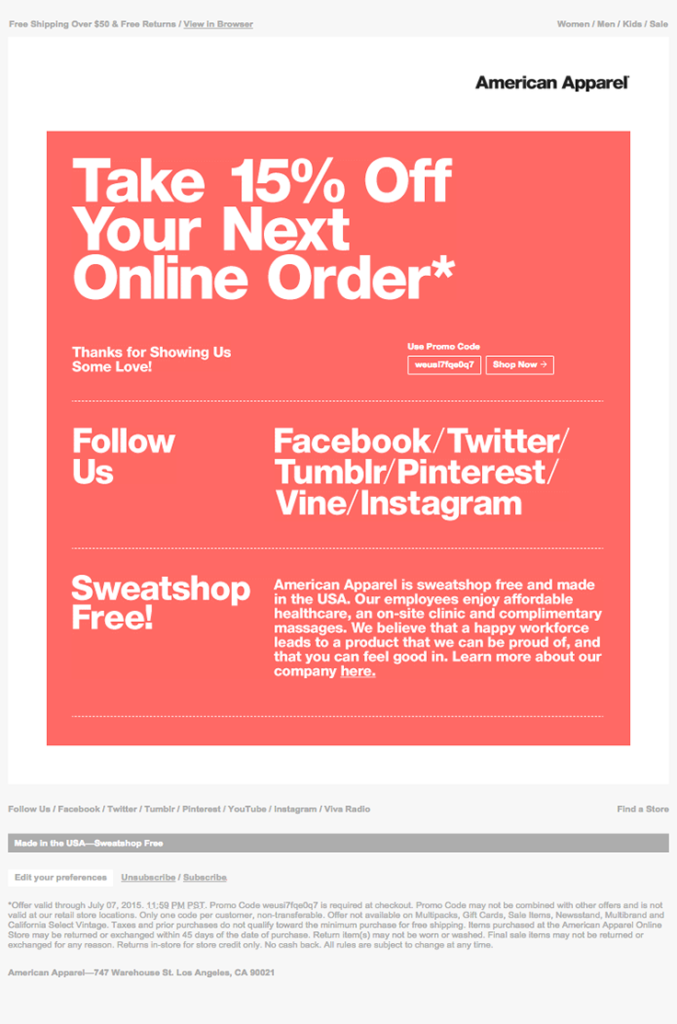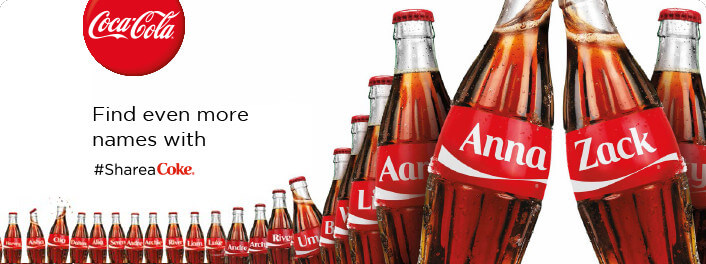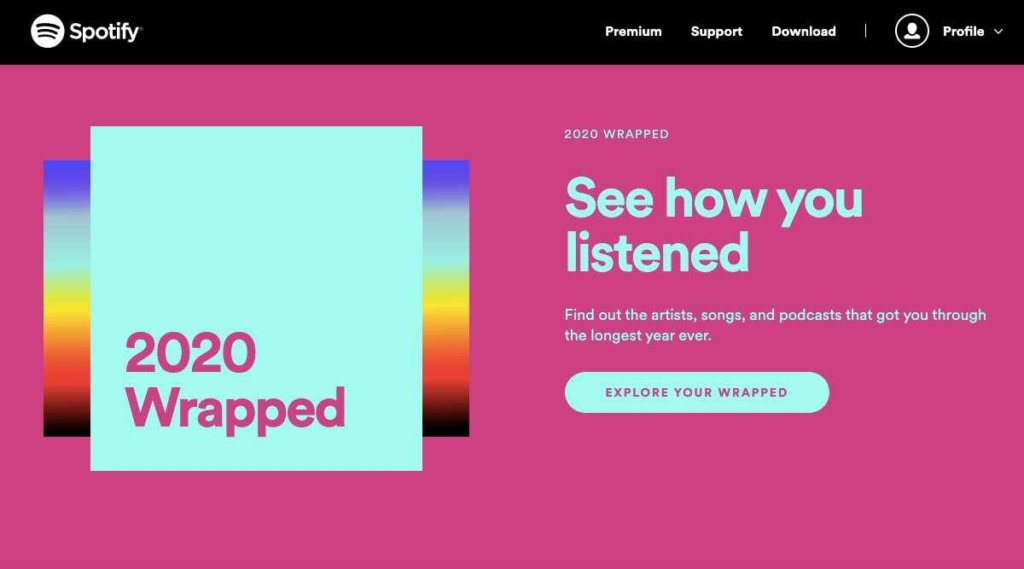To Keep an Eye on
As a marketing solutions company with lots of interest in innovation and change – we’re big on knowing what’s trending and what’s to come. 2021 was filled with a ton of new trends, some – because of changing times and innovation – others, because of big events and worldly occurrences. To stay ahead and prepare for the new year, we’ve looked into the top marketing trends – within design, print, and digital, to keep an eye out for in 2022.
2022 Design Trends
Visual Inclusion
Recent movements around the nation, and even the world, have sparked a broader portrayal of diversity and inclusion in visuals. When crafting your marketing, think about how you can show diverse people in a variety of ways – in your photography, graphics, and iconography. And, even more, think about including imagery of people that your target audience(s) can relate to.“The default for people icons and images are no longer white, male, and able-bodied. There is more representation from marginalized groups in marketing visuals.” The more open, inclusive, and inviting your marketing is, the more likely you’ll bring in a diverse range of interested (and trusting) customers.
Bold Backgrounds
Bold and bright backgrounds and backgrounds with patterns are on the rise. These types of backgrounds attract attention and stand out from the pack, among otherwise modern – and primarily dull, gray, or white – busy feeds and mailboxes. Try using a brighter, bolder background to stand out among other marketing materials. This tactic can be “quite stunning when paired with more simple typography or other design elements,”but, to make this trend work for you and your brand, “ensure that everything has a place and there’s good eye flow between elements.”
Unique & Fun Typography
The year 2022 will be all about typography that “breaks standards”, such as “one single letter…upside down, bigger or smaller, in a different font, or completely missing.” Forecasters expect “lettering that pushes the bounds of easy legibility, creating forms that are expressive in and of themselves.” This unique and rising design tactic can also make for more internationally understandable text and imagery that can be read from culture to culture.
Authentic Imagery
Authentic, realistic imagery that your audience can connect with is always important – but will be increasingly popular in 2022. People don’t want to see fake stock families and disingenuous product photos. They want to see real. “Even commercial photography is shifting to look more like snapshots for these projects” instead of planned, posed imagery. This tactic may be a little less polished and intentional, but it works, because it’s relatable. “More authentic imagery is not amateurish; it’s just a different style.” Yet, this doesn’t mean taking blurry or “thrown together” photos. It means shooting high-quality photography that’s just a bit more casual and realistic to real, day-to-day life.
2022 Digital Marketing Trends
Conversational Marketing
This will be a big one for 2022, as it’s already been on the rise for quite a few years. Why? People want to connect with, and relate to, real people. And, they want fairly immediate responses from those real people. Customers feel more connected with and trusting of companies that tell their story, as well as the stories of their products. They want to hear and see real life examples of what the product has and does, and what sets it apart.
A recent study found that 41.3% of consumers use conversational marketing tools before making purchases. “Unlike traditional strategies, this form of marketing is now available across multiple channels, allowing brands to meet customers on their terms: on the devices, platforms and time schedules that suit the customer best.”
Read more about customer communication and relatability, here.
Video Marketing
This trend isn’t new, and is likely to continue in popularity for the next 5-10 years. It’s no surprise to us (and likely not a surprise to you) that 61% of marketers see video as a “very important or extremely important” part of their marketing strategy. It’s a useful tactic not only because of its visual appeal and high rate of easily digestible content, but because it can be republished on several platforms, and cut and manipulated for repurposing. A recent study recorded that “84% of consumers have been convinced to purchase a product after watching a video.”
To read more on video marketing, click here.
Interactive Content
This year, there will be a noticeable marketing shift from “traditional text-based content toward dynamic, engaging content” like quizzes, augmented reality, polls, 360-degree videos, and more. These tools give customers a more memorable connection with both the product and the company, and get them involved with the brand – not just get them to see it. In fact, 91% of customers are interested in seeing more content they can interact with.
First-Party and Zero-Party Data
We’ve talked a bit about this topic before in a fairly recent blog post, and this trend is sure to skyrocket into 2022. This year, “first-party cookies will force marketers to be mindful of the data they collect and how they use it,” primarily because companies can now only use their own collected data. This also means that companies will need to be much more authentic and transparent with their customers. Along with first-party data, zero-party data – data given to a brand or company directly from the consumer, will also be a key focus. Some examples of ways to acquire this data are through surveys, forms, or email.
2022 Print Marketing Trends
Combining Print & Digital
This particular trend – we’re very well-versed in. Combining print and digital can do wonders for your campaigns, meeting your customers with mulitple touches on and offline. A great example of this combination is using a personalized URL and QR code on a printed piece. QR codes on print marketing not only give customers an easy way to get to know your company better, but can be vehicles to get customers to purchase or sign up for a program – immediately. These types of combination tactics are flexible, dynamic, and cater to many differing age groups.
Creative Customer Personalization
Also, a great online or offline tool? Personalization. When your company caters to a specific type of audience, or even specific customers rather than a blanketed group, you’re more likely to meet customer’s needs and turn them into loyal ones. Additionally, personalization can be cost effective. Why’s this? In order to personalize, you can’t target everyone – just the right ones.
Direct Mail
Lastly, not a new or surprising trend to us, direct mail will continue to grow in popularity in 2022. “With the content marketing boom and remote working becoming the new normal, many consumers have become ‘numb’ to digital marketing campaigns.” So, if you haven’t, why not give direct mail marketing a go? Trying out this re-emerging marketing trend could bring a ton of new customers to your site, as 70% of people engage with a brand online after receiving their direct mail.
Read more on why direct mail is so impactful, here.
Interested in ramping up your marketing in 2022 using one or more of these solutions? We can help! Contact the experts at Strata, today.
How to Fight it & Flourish
As spooky season approaches and Halloween is around the corner, we’re thinking a lot about our biggest fears. But today we’re not talking about ghosts or goblins or even Michael Myers. We’re talking about one of the scariest things of all to any workplace…complacency.
“Complacency is man’s biggest weakness. It creeps up on us when we least expect it.” – Jay Mullings
Even if you think your company isn’t anywhere near complacency, there’s still always room to evaluate and grow. And, you may be surprised by what’s lurking behind the door of contentment. Complacency is not only bad for your company, but good for your competition, which we’d assume will give you a bit of a fright. If employees aren’t challenged to improve, things are the way they are because it’s the “way they’ve always been”, and the company isn’t growing, it’s definitely affecting your revenue. But don’t worry – it’s never too late to change. In this blog, we’ll take a look at the best ways to avoid company complacency and ensure you’re periodically updating and enhancing your culture, practices, and marketing.
Complacency’s Cause
Complacency can sneak up on any company without warning, shielding it from growth and stifling creativity and innovation. Why? Because if companies are seemingly doing “fine” and meeting their goals on paper, they feel no “need” or urgency to change. That’s where the biggest mistake is made, because companies should always be looking to evolve and thinking about their vision for the future. If not, ideas become stale, talent becomes bored, and eventually, the company comes to a jarring halt without any clue of how they got there.
When everything seems to be going well, it can be difficult to disrupt successes. And it may feel like the right decision to let processes and practices take their course rather than think about next steps and development, but often “the riskiest thing we can do is just maintain the status quo.” Without urgency and consistency for change, employee performance shifts and can even decline. Statistics show that only 30% of employees in America are actually engaged in their work, and only 13% of employees worldwide are engaged in their office environment. With such low numbers already, it’s so important to keep employees excited, energized, and motivated for what they’re doing and what’s to come.
Combatting Complacency
With complacency being a bigger, scarier possibility than you may have assumed, it’s important to keep it top of mind and to make sure you’re doing your best to combat it. Start with communication of your company’s mission, vision, and values. Make sure they’re clear, known, and maybe most importantly – accurate and true. Know who you are. If you do – your employees will too, and in turn they’ll feel more connected with and motivated by your workplace. Allow employees to see their contributions to the bigger mission, and their worth as an asset to the overarching vision.
After all, having a good (and growing) company culture is key to combatting complacency and ensuring workplace satisfaction. How do you improve your culture? Many ways, but the most effective tools are company newsletters, employee highlights, group meetings, and employee appreciation. Again – make your employees feel valued, and they’ll more likely provide value.
Additionally, make sure team members feel important and part of the greater whole. Encourage managers and team members to communicate within their individual teams, and make sure responsibilities are delegated and well distributed. Employees are more likely to become bored when they’re doing the same tasks over and over, so give them room to be creative and explore new opportunities. You never know who may have the next best idea.
Lastly, be prepared for whatever may come your company’s way, and never be too afraid to challenge the status quo. If we’ve learned anything these past two years, it’s that anything can happen, and that the saying “it won’t happen to us” is just not realistic. It’s important to listen to the ideas of your employees and always be prepared for what’s to come with an open communication structure. Make sure you have multiple decision makers, not just one, and that employees feel comfortable enough to make some decisions without “permission” from a leader. Training your employees to make decisions on their own will be a key factor in combatting complacency.
Refreshing Without Fear
Almost as important as your workplace and its people is your brand and marketing. Without change and evolution, your marketing can quickly become out-of-date right under your nose (causing your employees to lack company pride and your audience to lose interest). But how do you know when it’s the right time to update your brand and marketing?
A sure sign (these days) of lack luster marketing is an absence of social platforms. Some would even say if you’re not online, you might as well not exist. And although we think that sounds a little spooky, we’ll admit that it holds some truth. If you’re hard to find and not posting relevant content and imagery, target customers may be choosing your competitors (who are more accessible and approachable) over you.
Also important to your brand and its relevance is your website. In this day and age, it’s very easy to tell when a website has been left alone so long that it’s developing cob-webs. If you’re finding that your website traffic is down and your customers aren’t interacting with it, it’s time for an upgrade. But, before any big changes, compile data and make purposeful decisions. What is your audience looking for? What do they respond well too? How can you quickly and easily get them to have interest in your company and purchase goods?
Additionally, make sure you keep your advertising and customer communication – whether digital or physical – energized and creative. Combine direct and digital marketing to reach specific audiences and keep your brand top of mind. Don’t settle for just one medium that “seems to be working” if multiple channels of communication could bring you more success.
Lastly, avoid complacency by focusing on helping the customer rather than selling to them. While the overall goal of most companies is to generate sales, it’s essential you show your customers that you care about their pain points and needs. To see all of these tactics in action, check out our recent blog on how to create successful marketing campaigns.
Company complacency can sneak up on you like a ghost in the night and lead to missed opportunities, poor customer service, and disengaged employees. Stay aware of the possibility of contentment and make sure you’re always exploring, evolving, and rising above the rest. Change is inevitable, but complacency doesn’t have to be.
For more information on what we do at Strata and how we can help you fight complacency with one of our marketing solutions, contact us today.
A Look at Some of Our Favorite Customer-Focused Campaigns
Although we could write several blogs about all the great marketing campaigns that inspire and motivate us to be the best marketers possible and make the most effective material – in this blog, we’re looking at a few that we really admire because of how relatable and real they are. We’ll be breaking them down, thinking through what made them so successful, and in turn – helping you brainstorm your next campaign. Follow along as we dive into these customer-centric campaign leaders.
Apple’s #ShotoniPhone Campaign

No matter where you’re located – you’ve likely seen this one around town. On billboards, buses, signs, or online. iPhone and Apple’s popularity is pretty known, but what we didn’t know when the iPhone first became popular was that it would eventually completely replace the digital camera. And that’s what this campaign shows; that you can take photos with your iPhone that are as beautiful as a camera that would cost you thousands. That’s great and all, but that alone would not convince people of today. So, why’s this campaign so successful? It gets real people involved. It’s relatable. The photos are not only from real Apple customers – but include their names. If someone wanted to, they could look up the name of the person in the bottom corner associated with taking the photo and learn more about who that person is. The best part? Not all of these people are photographers, showing that anyone could use the iPhone to take great photos. This tactic is pretty genius and builds trust – as no one would really care if it was simply a generic photo that easily could have been taken on a Canon. “According to various studies, over half (51%) of Americans trust user-generated content more than other information on a company website and claim that it influences what they buy and where they buy it from.”
Coors Light’s #CouldUseABeer Campaign

Another campaign that spoke to the general public and got them involved during a difficult time? Coors Light’s #CouldUseABeer. After a photo of a quarantined, 93-year-old woman asking for a beer went viral, Coors Light engaged with its audience by offering free six packs to anyone who was tweeted about (who – you guessed it, could use a beer). This tactic of giving away free items may seem pretty crazy, but it can go a long way. Although Coors Light gave away over 500,000 beers, their name was tweeted about again and again, which led them to trend, and boosted their reputation in a time of need.
American Apparel’s Direct Email Marketing

Known for being trendy and modern, American Apparel is no stranger to effective, up-to-date, customer-centric marketing. We’re specifically impressed with their to-the-point email marketing. No frills, no fluff – just what the customer wants (sales, discounts, and freebies). American Apparel always ensures that there’s no guesswork for their customers. Simple and sleek, their emails are call-to-action forward without being in-your-face.
Mercedes’ “Like You” Campaign

How do you relate a high-end brand to a broader audience of customers? Relate it to them, literally. Mercedes’ “Like You” campaign did just that. Called to several different types of audiences with phrases like, “Detail-obsessed, like you”, “Groundbreaking, like you”, “Original, like you” and “Curious, like you”. And not only was this phrasing compelling, but consistent. For the span of the campaign, potential customers could find the phrasing on billboards, signs, online ads, and on tv. The consistency was key, in that potential customers began to associate themselves with the brand and possibly even buy a Mercedes.
Airbnb’s Use of User Generated Content

Similar to Apple’s tactic, Airbnb uses the photos, videos, and feedback of its customers in its campaigns to promote beautifully classic or uniquely interesting places to stay. “Millennials spend 30% of their media time (5 hours/day) engaged with user-generated content (UGC). Coincidently, this is the same generation that drives Airbnb’s success in the sharing economy.” Airbnb keeps things personal and personalized by including its audience, which facilitates a happy and loyal community of customers.
Coca Cola’s Share a Coke Multichannel Campaign

We all know this one. There’s nothing more personal than having your own name on a Coke bottle – which is exactly what Coca Cola did for its ongoing “Share a Coke” campaign. Whether you customize your bottle or simply find your name in store, you’re likely to share it with the world through text, email, on social, you name it (no pun intended)! And its rollout in 2011 sure worked in building brand awareness, boosting sales, and creating positive brand recognition, as “Young adult consumption increased significantly during the campaign, up by 7%, making 2011 the most successful summer ever. The campaign earned a total of 18,300,000-plus media impressions.”
Spotify’s #2020Wrapped Campaign

If you have any form of social media, you’ll likely remember this campaign flooding your feed, and maybe you even took part in it. At the end of 2020, Spotify allowed its customers to see their year of music with “2020 Wrapped”, which compiled their listening into a lovely array of photos and stats. Viewers loved seeing their personal data compiled into a nicely packaged marketing piece – and loved sharing their interests with others. Smart on Spotify’s end, because it not only gave them free marketing, but boosted their recognition.
So, What Have We Learned?
If you haven’t noticed, most of these campaigns share one key factor; relatability. How can you use relatability to create effective campaigns, too? Know your audience. Before even starting to brainstorm a campaign, make sure you’re fully aware of who, where, and when you’re targeting. And when you do start your campaign based off your findings, use that data and understanding to carefully craft consistent messaging that includes clear call-to-actions and personalized, catered content. Use hashtags, giveaways, QR codes, PURLs, BRCs, and more to engage with your audience and include them in your campaign. And, when and if appropriate, sprinkle in some humor.
Interested in making an impactful, relatable campaign that can help boost your company’s marketing efforts? Not sure exactly where to start? Look no further. Strata’s here to help. Contact us today to get the brainstorming started.
A Strata YouTube Channel Original
When building a multichannel marketing campaign, one of the first steps is to build a cost structure to set the direction of the project. If you don’t plan ahead, costs can add up quickly, so to help you out, our most recent YouTube video goes over the different costs behind a successful multichannel marketing campaign and how to make your next campaign both cost effective and impactful. Let’s go ahead and take a look at the first cost of a multichannel campaign.
Platform Cost (Managed Service Cost)
Picking a strong technology platform is a make-or-break decision that will determine how successful your multichannel campaign will be. Effective and coordinated multichannel marketing is only made possible through technology, so it’s essential you have access to it. A recent survey revealed that 52% of marketers utilize 3 to 4 marketing channels in one campaign, so the correct platform that can properly track and execute a campaign on many channels is imperative. If this is your first rodeo, pick a vendor to coordinate and manage these campaigns. Doing so will essentially convert the majority of the upfront costs to variable execution costs and will make the campaign easier to manage. Make sure the platform you choose properly aligns with your business strategy, as only 16% of marketers claim they have this alignment. Generally, your company should budget between $20k and $40k for a solid, multichannel-capable platform that will get the job done.
Want to learn about the two other costs associated with multichannel marketing campaigns? Click on the video below to hear from our Research & Development Director, Harrison. Or, if you’d like to discuss this concept with one of our multichannel experts, contact us today to get your next (or maybe your first) multichannel campaign up and running.
Make a Mint off of Print
In last week’s blog, part 1 of the Power of Print series, we discussed how powerful print marketing really is, and how beneficial it can be as a central branding and promotional tool. This week, we have for you, part 2 of the series. Now that you’re convinced of its importance and relevance, we’re giving you key tips and tricks your business can use to enhance the power of your print marketing.
We know you’re busy, and you likely want to save all the time you have for productive business efforts and possibly some great marketing, so, we’re making this a quick and easy read. Like we said, we have more than a few (8, to be exact) top practices to create effective print marketing materials…
8 Ways to Improve the Power of Your Print
Know Your Audience
Any print material you distribute should be at least somewhat personalized and developed with your key audience in mind. Make sure your messaging and visuals speak to the people you’d like to reach above all else. Before even creating your print marketing materials, take time to research and understand your audience, looking into not just their wants and needs, but also their pain points and expectations.
Don’t Push Design Aside
You may think design can come as an afterthought – the last piece of pulling it all together and getting your marketing printed, but the total opposite should take place. Think through your visuals just as you would your content and call outs. Use them to connect with your audience and grab their attention. And, don’t skimp. Print’s already very cost effective, so spending that extra bit on design, paper, and colors is worth it, and could be the reason your audience starts to love your brand or continues to be loyal.
Have a Clear Message
When you’re dealing with print, there’s usually a limited amount of space available, at least compared to digital. There’s not as much room to “say it”, so your forced to “say it right” (which can be a great thing when determining necessary messaging to entice customers with fleeting attention spans). Make sure your message, especially your call to action (what you want the customer to do or know) is loud and clear – not hard to find. Don’t clump all of your products into one postcard. Instead, feature a few products, or better yet, use data to personalize the material and feature that specific customer’s favorite merchandise.
Make it Relevant
We’d like to reiterate – because of just how important it is – to always research, understand, and consider your target demographic before creating print materials. Why would your product or service interest them? Why would they need it? How could your material catch their eye? Personalizing this content will make it much more memorable and impactful. In fact, in a study conducted in 2019, 72% of consumers claimed they only engaged with marketing messages that were customized to their specific interests.
Engage the Senses
When it comes to creating print marketing, don’t just think about what the eyes can see. Print marketing is very much a multi-sensory experience. Consider textures, sounds, and scents (yes, scents!) that evoke feelings within your customer – whether those feelings are excitement, envy, importance, or nostalgia. Incorporating a three-dimensional effect, such as a texture, embossing, or thicker areas of material, can help your print marketing stand out among the rest.
Use a Call to Action (CTA)
Like we said before, you want your call to action to be loud and clear. You don’t want your potential customer setting down your print material without clarity on what you’d like them to do. Make sure to include your address, phone number, and any other applicable contact information like an email address or social account(s). Consider including a coupon for them to use or a sign up for a rewards program, subscription, or membership.
Combine it with Digital
Gain trust and credibility by incorporating digital touches within your print marketing, like QR codes, PURLs, social accounts, and other web references. The best part? Doing so will make campaign attribution a breeze, and will make it easier for you to follow up with interested customers.
Pick the Perfect Printer
The last step of any print marketing process is finding the right printing company to work or partner with – that has affordable yet reasonable rates – and quality print products. Seek out a company that will not only print your materials, but will care about your bottom line and success (almost) as much as you do. They’ll likely offer a variety of printing options, and will have a creative vision for your campaign and/or overall marketing.
Not to toot our own horn (okay, maybe a little), but at Strata, we’re print experts and it’s in our DNA. We’re prepared to work with you whenever you’re ready to brainstorm your next print marketing project. Just contact us when you’re prepared to make smart happen.






